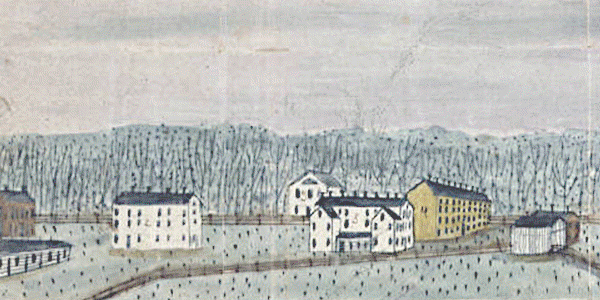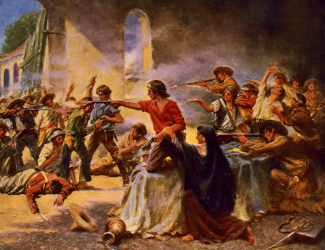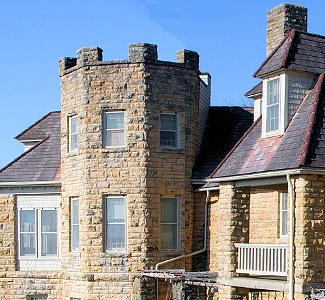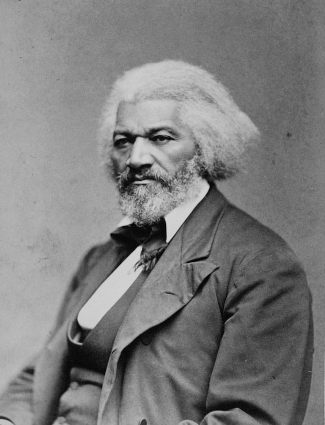Sponsor this page. Your banner or text ad can fill the space above.
Click here to Sponsor the page and how to reserve your ad.
-
Timeline
1833 - Detail
September 2, 1833 - Oberlin College is founded. It refused to bar students on the subject of race and included the distinction of becoming the first college in the United States to offer coeducation.

Way ahead of its time. No segregation. No education just for males. Oberlin College refused to bar its applicants from acceptance due to race at the requests of its fellow students and benefactors. Oberlin College refused to bar its applicants from acceptance due to gender. Oberlin College had it right, right from, almost immediately the start, all in a somewhat unlikely place, Oberlin, Ohio.
So how did this happen? It should come as no surprise that the forefathers of Oberlin College were religious. In fact, Presbyterian Reverend John J. Shipherd and Indian missionary Philo P. Stewart had met again in 1832 after first attending prep school together in Vermont; they discovered that they still shared some fundamental principles. One, that the settlers of the American West, Ohio at the time, were not practicing Christian principles as much as they'd like. Two, that they should do something about it. So they set about to establish a colony and college that would uphold, or at least strive, for their beliefs, and they would name it after John Frederick Oberlin, a pastor from France who pioneered a similar project in the poor communities of France. It would be a place ...
"... where they would train teachers and other Christian leaders for the boundless most desolate fields in the West."
A donation of five hundred acres of land started the college of Oberlin; The town was planned on five thousand acres purchased by Shipherd at $1.50 per acre. The town's first settler, Peter Pinder Pease, built the first log cabin there in the spring. In September, Shipherd, his wife, four sons, and other colonists moved to town. The Shipherds lived in the basement of rustic Oberlin Hall, the first college building, with another family. By December 3, 1833, the college was in session with twenty-nine men and fifteen women students with free tuition in exchange for assistance in building the town. This is the date the college accepts as its founding, although other sources contend September 2, 1833, which may be more associated with articles of its planning or Shipherd's residence.
The first president of the college (1835-1850) was chosen after its incorporation in March 1834, a noted abolitionist and Congregational clergy, Asa Mahan. He had been a trustee of Lane Seminary in 1831, advocating to set all slaves free immediately. The students at Oberlin noted that and advocated for his presidency of their college, and they demanded that all races be admitted, as well as women. This was seconded by financial backers and abolitionists Arthur and Lewis Tappan, who agreed on the same all races allowed policy. The Oneida Institute had previously allowed black students, an Institute also funded by the Tappans, but not women.
The first class at Oberlin did not include any black students; it is not known if any applied. The first black student was admitted in 1835 after its incorporation. The first black student to complete his bachelor's degree was George B. Vashon in 1844. Mary Jane Patterson became the first black woman to graduate from Oberlin, first for any American college, in 1862. It is often stated that Mary Church Terrell, the noted civil rights advocate, founding member of the National Association of Colored Women in 1896 and a charter member of the National Association for the Advancement of Colored People had been, at least, one of the first black women to graduate from Oberlin. However, that is inaccurate, although still important, as she graduated from Oberlin in 1884 with the distinction as perhaps the first black woman to graduate on the gentleman's four year track, not the two year track that was usual for women. The college library is named in her honor.

How Oberlin Grew
The agreement by flamboyant evangelist Charles Grandison Finney, an abolitionist as well, to head the theology department in 1835, was an important spur to its development. He had been a mentor of Shipherd, and would later serve as its president, acting in that capacity from 1849 to 1866. By 1850, the college, initially known as Oberlin Collegiate Institute, was now formally known as Oberlin College.
As the days of the Civil War approached, Oberlin remained in the forefront of the abolitionist movement. In 1858, Oberlin and Wellington residents, both black and white, rescued John Price, a fugitive slave, from his U.S. Marshal captives, violating the Fugitive Slave Act passed in 1850, and helped him cross the border to Canada. Federal officials, including President Buchanan, urged indictment, and thirty-seven were arrested, including twenty black men. State authorities arrested the U.S. Marshall. After negotiations between state and federal officials, thirty-five of those indicted were freed, but two men, one black and one white, were tried and convicted. Their sentences were light, and attempts to overturn them were tried, but their appeals were denied. The residents and students of the college continued their activity through the years of the Civil War, maintaining an important stop on the Underground Railroad.
The college and town expanded after the Civil War ended, adding the Conservatory in 1867 (it had been founded as a separate institution in 1865), and is still today known as Oberlin College and Conservatory. In 1891, Oberlin College added collegiate sports, football, with John William Heisman coming on board as coach. Yes, he's that Heisman the award is named after. The Allen Memorial Art Museum was built on campus in 1917.
The town and college of Oberline broadened its social causes to include prohibition, advocating through the Anti-Saloon League, founded in Oberlin in 1893, for a Prohibition Amendment, which passed as the 18th Amendment to the Constitution in 1920. That did not work out as well as its initial focus; the amendment for prohibition was overturned with a subsequent amendment, the 21st in 1933.
Oberlin Today
Oberlin College and Conservatory today has an enrollment of two thousand nine hundred, spread amongst its College of Arts and Sciences (2,300) and the Conservatory of Music (600) on a four hundred and forty acre campus. The town today has a population, which has remained steady since 1960, at just over eight thousand residents.
Photo above: Montage of (background) Oberlin College, 1909, R. W. Johnston Studios; (right inset) Mary Church Terrell, graduate of Oberlin College, circa 1880/1900, unknown author. Both Courtesy of Library of Congress. Photo below: Portion of the painting, Partial View of Oberlin, 1837, H. Alonzo Pease. Courtesy Wikipedia Commons. Info Source: Oberlin College and Conservatory; Library of Congress; Wikipedia Commons.





